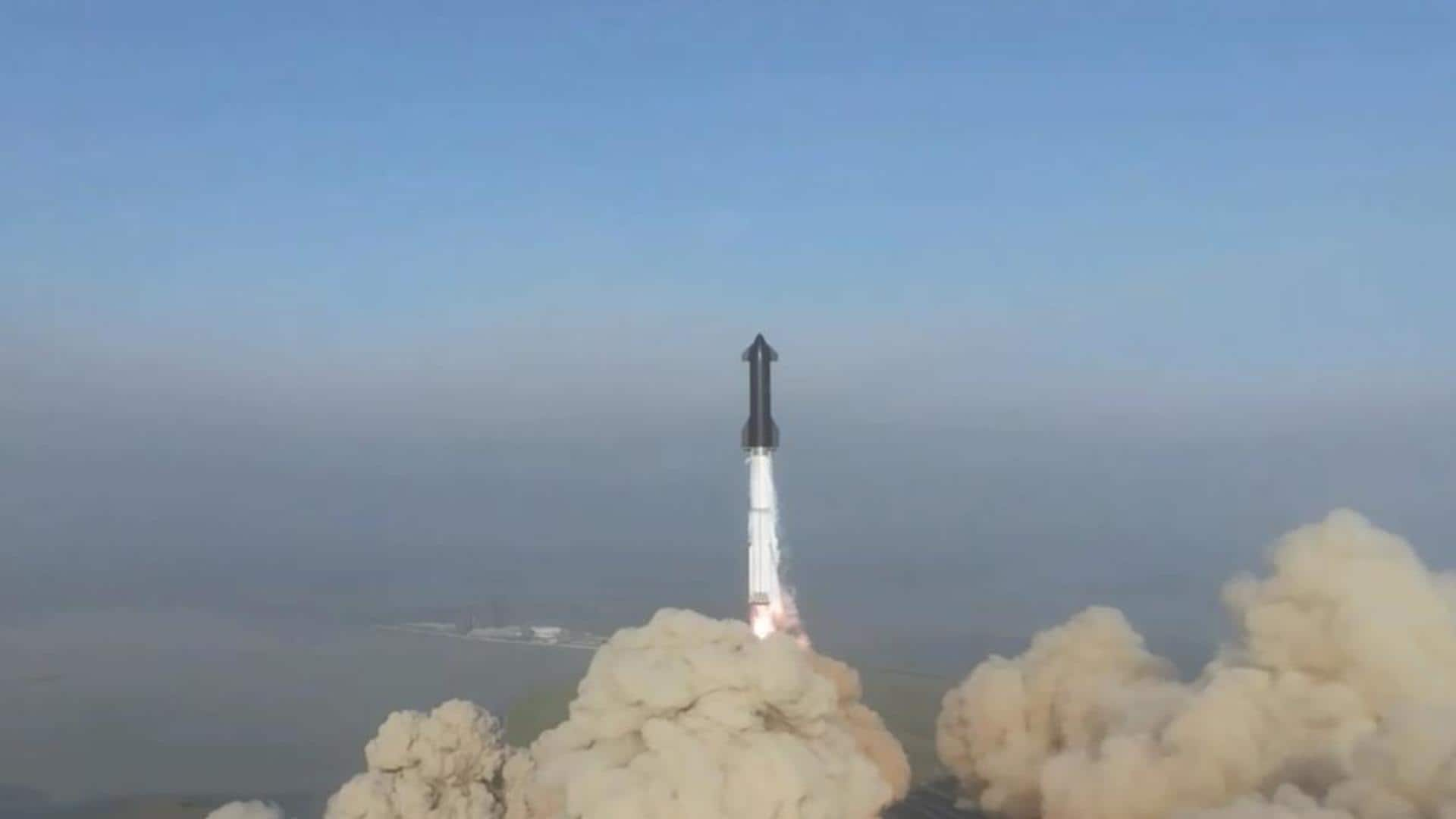
SpaceX's Starship, world's biggest rocket, explodes moments after launch
What's the story
SpaceX successfully launched Starship, the world's most powerful rocket, but it exploded some minutes into the test flight. The Starship capsule was supposed to break away from the first-stage rocket booster nearly three minutes after lift-off but the stage separation did not occur and the rocket blasted. The launch vehicle took off from SpaceX's Starbase facility in Boca Chica, Texas.
Context
Why does this story matter?
This was the first integrated test flight of the Starship spacecraft and the Super Heavy booster, collectively known as Starship. Today was the second launch attempt for Starship. Originally, the test flight was scheduled for April 17 but was called off less than 10 minutes before lift-off due to pressurization issues with the booster.
Timeline
What went wrong with Starship's first orbital test flight?
Starship took off from the launch pad but experienced what's called "rapid unscheduled disassembly" before stage separation and eventually exploded. SpaceX said it "will continue to review data and work toward our next flight test" and that today's test would help "improve Starship's reliability." If the test flight went per schedule, stage separation should have occurred about 2 minutes 52 seconds after lift-off.
Twitter Post
Take a look at the lift-off and explosion
Starship didn’t separate as planned, started tumbling and was lost at 4mins after liftoff. Not yet clear if explosion was a manual termination command, since the rocket was showing signs of failure pic.twitter.com/OFtvNIs6Rj
— Joey Roulette (@joroulette) April 20, 2023
Events
What was the original plan for Starship's test flight?
According to the original plan, the Starship spacecraft was not expected to make a complete orbit around Earth. It was expected to reach an altitude of 234km and splash down in the Pacific Ocean, off the coast of Hawaii. The Super Heavy booster also was expected to return to Earth and should have made a hard landing in the Gulf of Mexico.
Test objective
What was the purpose of the first orbital test flight?
The first test flight was meant to assess the performance of the Starship system. Starship's upper stage has undergone multiple sub-orbital flight tests before and the Super Heavy rocket has been subjected to numerous tests as well, including the test firing of the Raptor engines in February. However, both the Starship spacecraft and the rocket had not flown together before today's flight.
Components
The Starship system stands 395 feet tall
At 395 feet, Starship is the tallest rocket ever. The system has two parts: the Super Heavy rocket with 33 Raptor engines and the Starship spacecraft, which sits atop the rocket. The spacecraft is designed to disengage from the rocket once the latter has consumed its fuel. On the other hand, the Super Heavy booster is responsible for the first power boost at launch.
Information
Starship is more powerful than NASA's SLS rocket
Starship is also the most powerful rocket, beating NASA's Space Launch System (SLS). Its 33 first-stage Raptor engines can produce 16.5 million pounds of thrust at take-off, almost twice that of SLS.
Implications
Starship will be able to carry both astronauts and payloads
Starship has the capability to ferry both astronauts and payloads to the Earth's orbit, Mars, Moon, and beyond. Super Heavy can ship payloads up to 100,000kg in the Low Earth orbit (LEO) during future space missions. The launch system will be able to transport payloads to much farther distances and at a "lower marginal cost per launch" than the current Falcon rockets.
Information
Starship is a fully reusable system
The Starship system is designed to be fully reusable. That means the prime hardware parts will not be discarded, like other launch systems. Instead, it will be brought back to Earth and will be used again on future missions.
Twitter Post
Next launch attempt in a few months, says Musk
Congrats @SpaceX team on an exciting test launch of Starship!
— Elon Musk (@elonmusk) April 20, 2023
Learned a lot for next test launch in a few months. pic.twitter.com/gswdFut1dK